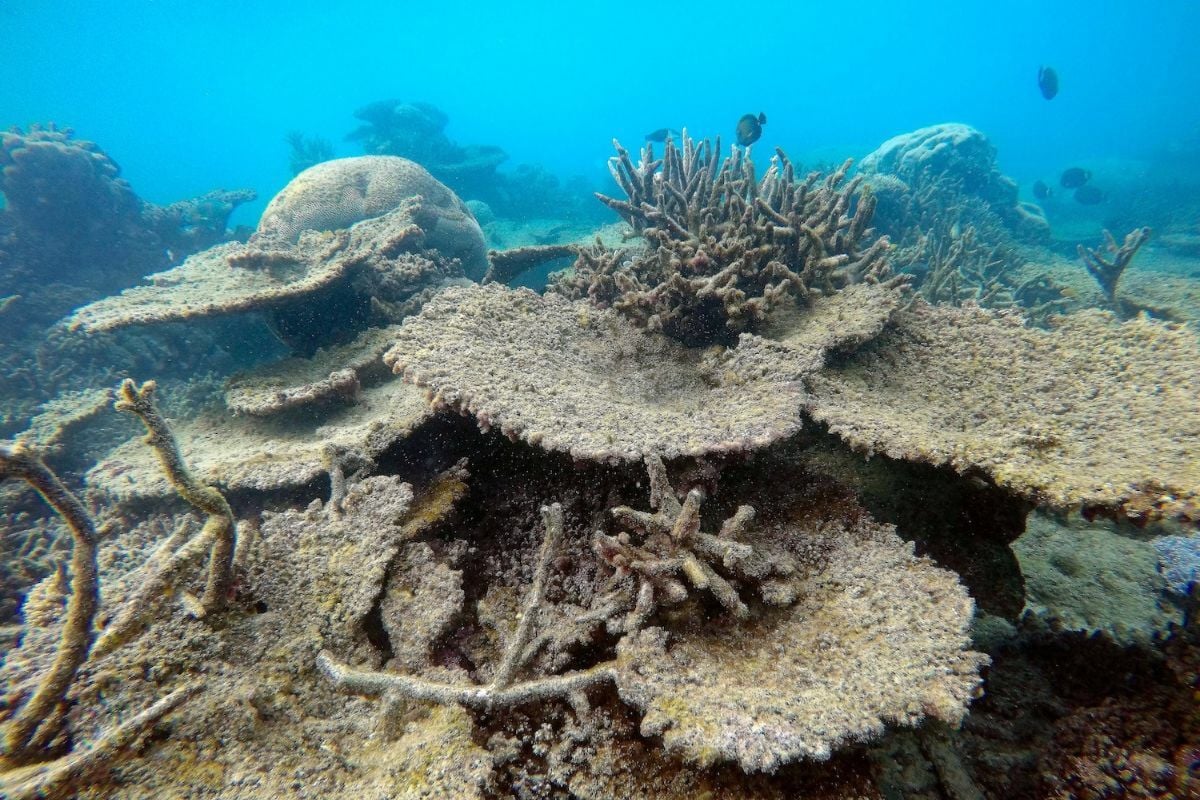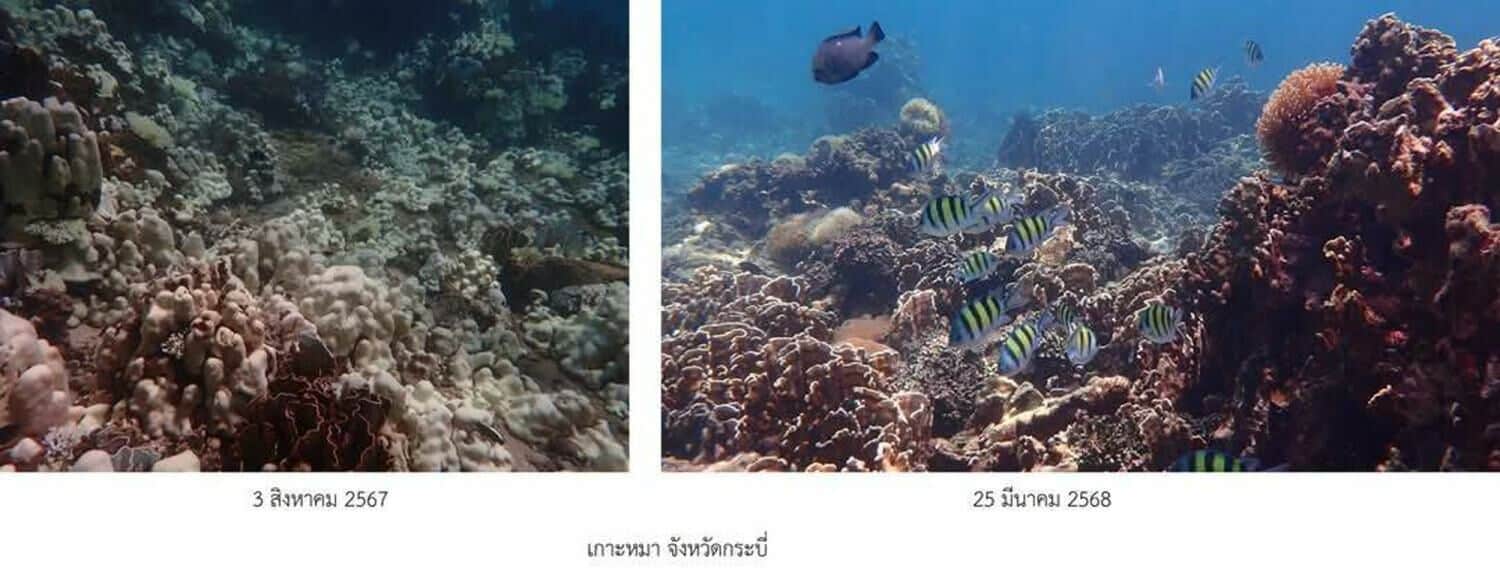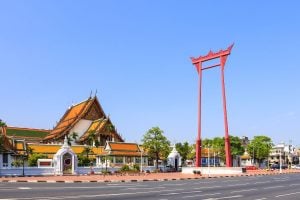Thai coral recovery: over 60% of bleached reefs saved

The Department of Marine and Coastal Resources (DMCR) has successfully rescued over 60% of the coral affected by bleaching since last year.
Pinsak Suraswadi, Director General of the DMCR, reported that since April last year, approximately 60-80% of coral in Thailand’s waters experienced bleaching. Of these, 60% have been successfully revived, while the remainder perished.
The bleaching was attributed to rising sea temperatures, which caused stress to the coral, leading them to expel zooxanthellae algae. This loss weakens the coral and causes it to turn white.
A survey of the Andaman Sea revealed that around 55% of the coral had been bleached last year, yet 60-70% has been saved so far.
In contrast, the Gulf of Thailand experienced peak bleaching in May of the previous year, with about 90% of the coral affected. Thus far, only 40-60% have shown signs of recovery.

Coral in shallow waters suffered the most, according to Pinsak, but currently, no new bleaching has been detected in either region, which is an encouraging outcome.
This year, the DMCR has been actively regenerating coral across seven provinces: Trat, Rayong, Chon Buri, Prachuap Khiri Khan, Surat Thani, Phang Nga, and Phuket, covering a total of 24 rai of reefs. Additionally, approximately 60,000 reproduced colonies are being nurtured to support the conservation and revitalisation of Thai coral reefs.
Natural Resources and Environment Minister Chalermchai Sri-on has introduced measures to combat coral bleaching.
These include the temporary closure of certain marine tourist attractions to facilitate coral recovery, discouraging tourists from feeding fish, cleaning up trash from coral areas, promoting the use of environmentally friendly sunscreens, and temporarily relocating coral to aid in their preservation, reported Bangkok Post.
Thailand has experienced several significant coral bleaching events due to rising sea temperatures, particularly during El Niño years.
In 2010, the country saw one of its worst episodes, with up to 80% of corals bleached in the Similan and Surin Islands. Another widespread bleaching event occurred in 2016, again linked to global warming and El Niño conditions.
More recently, in 2023 and 2024, marine biologists expressed renewed concern as sea temperatures in the Andaman Sea and Gulf of Thailand surpassed critical levels, putting popular tourist destinations like Koh Tao, Koh Phi Phi, and the Similan Islands under heightened observation.
Latest Thailand News
Follow The Thaiger on Google News:


























